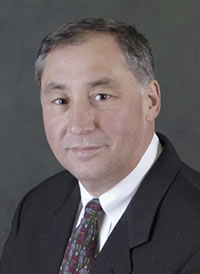Is Wind Power Feasible?

Robert Menard
Certified Purchasing Professional,
Certified Professional Purchasing Consultant, Certified Green Purchasing Professional, Certified Professional Purchasing Manager
In short, no one truly knows. In the centuries that mills have been used to power pumps and motors, little progress has been made on large scale technology to make wind powered electricity efficient. Storage and distribution of generated power also present great challenges. Greater problems may reside in reliability issues.
Reliability is a complex issue and will not be investigated here. Even the subset issue of the reliability of wind power is not simple. There is disagreement amongst advocates, let alone opponents, about whether small or large scale generator systems are more reliable. Another complicating factor involves geographical location and the relative frequency and velocity of wind streams so the issue of reliability of wind generated electricity is nowhere near resolution.
The larger issue needing full scale evaluation is whether this headlong sprint toward wind power amounts to little more than tilting at windmills. Let’s examine some facts beginning with technology. Wind mill farms have populated parts of the US and off our shores for decades but despite the expansion of wind generated power over the past decade, it accounts for only 3.91% of all US electricity as of July 2013, according to Electric Power Monthly.
There are 39 states with some form of wind generated electric industry but no unifying technology. To solve some of the technology puzzles, a small scale research project called SWiFT (Scaled Wind-farm Technology) is underway in west Texas. The $4.5 million venture is a partnership between the US Dept. Of Energy , Sandia National Laboratories , a unit of DOE and Vesta Wind Systems , a publicly traded major player in wind. Group NIRE (affiliated with the National Institute for Renewable Energy and with the National Wind Resource Center, provides assistance in development, finance and consulting, and Texas Tech University round out the cast of characters. That sure seems to be a lot of hands on such a small pie.
ENR, a leading construction periodical quotes John Schroeder, director of the Wind and Science and Engineering Research Center at Texas Tech , “There are a lot of black boxes – proprietary technologies in this industry.”
The first three turbines are erected and studies will continue over a year period. Among the engineering questions to answer are what is the formula for optimal spacing of turbines and angle and pitch of the blades . Although there is no press recognition of these potential problems that I could find in popular sources, the turbines are smaller than utility-scale turbines. This was done to keeps costs at 90% of full scale production costs. A troubling conclusion foisted by a Sandi representative in Albuquerque is that, “All the research can be scaled up to benefit larger-size turbines.” Hmmm…
To address my doubts as to the physics and engineering involved, I contacted several practitioners and academics. I had two major issues, aside from the reliability and storage questions that may be more of an enduring obstacle. These are spacing and pitch.
The spacing issue is the thornier bramble. Since I travel often, I live near DFW International Airport (DFW International Airport) , one of the best designed and operated in the world. Some years ago, DFW extended the length of several runways to about 13,400 feet, very long compared to most US airports. The stated justifications were phrased in marketing speak, “Reducing delays to aircraft operation on the existing runways and taxiways” and “Increase overall aircraft operations capacity.” All of that is true. The engineering and aeronautics origins are more revealing.
The runway extensions, called pods, allowed departing aircraft to stagger their departure locations so as to avoid the “wake turbulence” caused by jet engines. Visualize the wake from marine vessels and you can imagine the swirling turbulence in the air.
Here is the troubling part. Air planes, like wind powered turbines, are directionally dependent. A principle of aeronautics requires that planes must take off and land into the wind. Anyone who has ever attempted sailing knows the impact of wind direction. Fortunately sailing ships can adjust their orientation – turbines cannot; they are set in concrete into the ground.
What happens when wind velocity, a vector quantity that accounts for speed and direction, changes? The spacing is fixed so does turbulence negatively impact the neighboring turbine tower by reducing efficiency? No one yet knows the answer.
As to pitch of the blades, experts in air and water transportation (both media are called fluids) note that adjustments to pitch can affect rotational (angular) speed and generation efficiency. How pitch plays into the spacing issue of changeable wind velocity is an open question that one hopes can be addressed, if not completely answered by the research.
Underlying all of this doubt is the fact that the United States has wasted billions in search of publicly financed boondoggles involving both wind and solar power. While I am happy to learn of this scientific research, can we at least take our collective heavy government foot off the pedal on wind power, at least, until we know more?
Returning to the larger issue, if we as a country in the US had applied all the wasted billions in search of alternative fuels, and instead invested in reducing the detrimental effects of plentiful and energy dense fossil fuels, would we have been better served?
